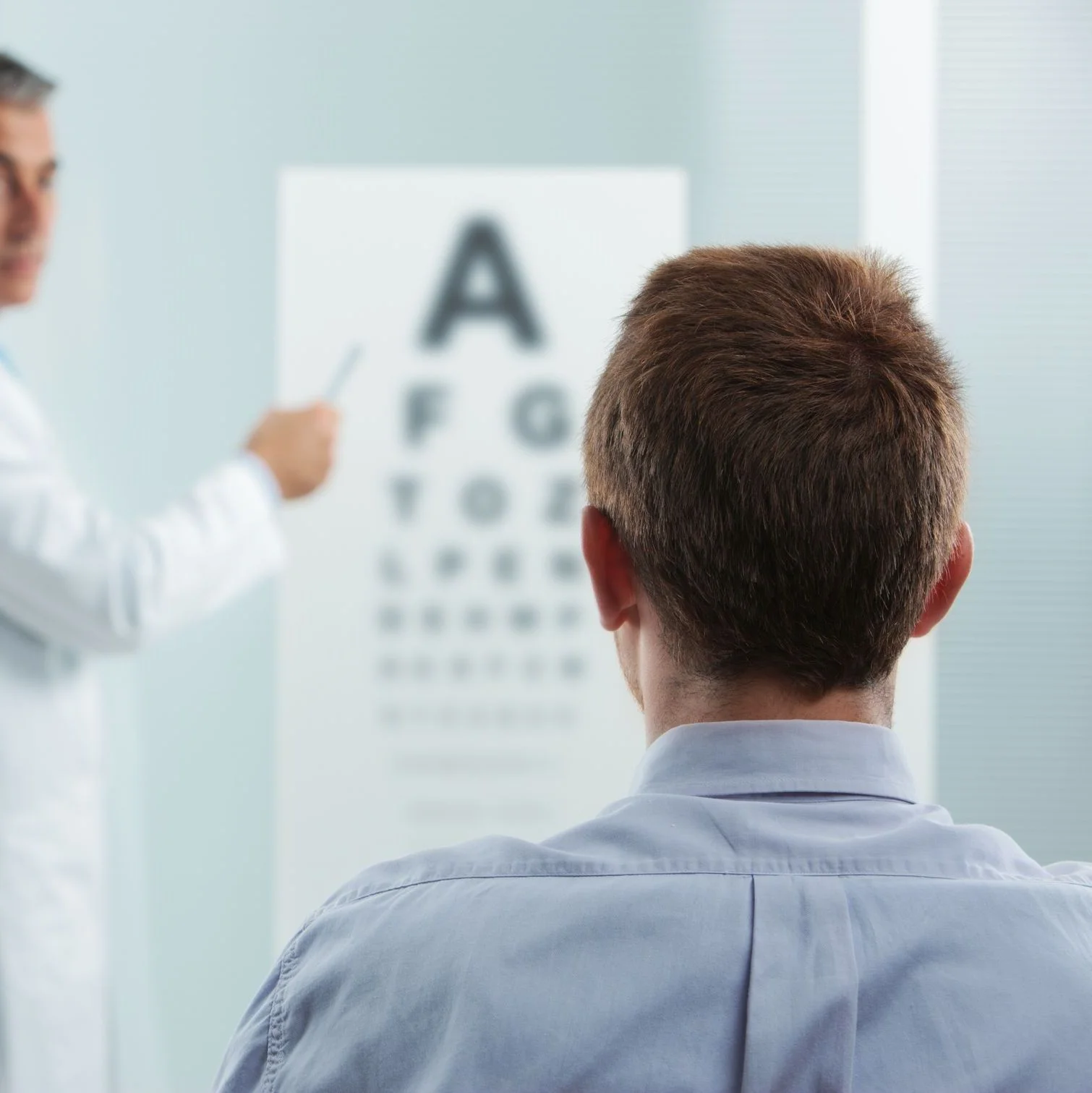Eye injuries and vision loss can happen anywhere or at any time, but if you’ve experienced either while on the job in California, you are likely eligible for workers’ compensation. James Koh is a resourceful and dedicated California workers’ comp lawyer who will work tirelessly to make sure you receive the workers’ comp benefits you’re entitled to. Call our firm at 213-232-2725 to get help with your claim today.
In addition to being one of the most serious types of workplace injuries, eye injuries and vision loss are among the most common types of workplace injuries, at over 2,000 cases per day.
Eye injuries can result in total or partial vision loss. Their symptoms can range from a few days to permanent in length, depending on the seriousness. Even more frustrating is that it often takes very little trauma to the eye to result in total and permanent blindness. What feels like a relatively minor incident involving your eye can cause a permanent and life-altering disability, thousands in medical bills, and a lifelong inability to find work.
Many employers have become more steadfast in protecting their employees from eye injuries, but even in situations where this is the case, accidents can still happen. An employee can be wearing safety glasses and personal protective gear and still be at risk of sustaining an eye injury or vision loss.
If you are experiencing an eye injury or vision loss due to a workplace accident, we can help you with a workers’ compensation claim. Call James Koh at 213-232-2725 for help with your case.
Vision Loss in the Workplace
Employees who have suffered an eye injury on the job may suffer permanent or temporary vision loss, which might not surface until days or even weeks later.
Nearly any type of foreign object, such as dust or wood particles coming in contact with the eye or even face or head trauma, can cause some or all of the symptoms below:

- Pain or discomfort: Eye pain or discomfort can vary from a mild ache to severe stabbing pain, depending on the nature of the injury. It may feel like a foreign object is stuck in the eye or a sharp sensation that worsens with movement or blinking, and you’ll likely be experiencing excessive tearing or watering.
- Redness and swelling: Inflammation of the eye tissues often leads to redness and swelling around the affected area. This can be caused by trauma, irritation, or infection. Swelling may also affect the eyelids, making it difficult to fully open or close the eye.
- Blurred or decreased vision: Blurred vision occurs when the eye’s ability to focus is compromised due to injury or trauma. It can range from mild blurriness to complete loss of vision in the affected eye. Decreased vision may occur immediately after the injury or develop over time, depending on the extent of damage.
- Sensitivity to light: Photophobia is a condition where the eyes become overly sensitive to light. This can cause discomfort or pain when exposed to bright lights or sunlight. It often accompanies other eye injuries such as corneal abrasions or inflammation.
- Visible damage: Visible signs of damage to the eye, such as cuts, lacerations, scratches, pupil enlargement, or blood in the eye (subconjunctival hemorrhage), may indicate a significant injury. These visible signs should not be ignored and require prompt evaluation by a healthcare professional.
If you’re experiencing any of the above symptoms, it’s essential that you seek immediate medical care. While your symptoms may seem mild at the moment, eye injuries can progress into permanent and total vision loss in as little as a few hours or days.
If you’ve injured your eye at work, go to the emergency room and tell them about the injury, specifically mentioning that you got the injury at work. Doing so can help create a trail of paperwork that documents your workplace eye injury or vision loss. And that can come in handy later in your workers’ comp case.
Common Work-Related Eye Injuries
While on-the-job eye injuries happen most frequently in manual labor jobs such as construction, welding, or agriculture, they can just as easily happen in other types of jobs if the conditions are right.
The troubling aspect of eye injuries is that they happen when you least expect it, whether you’re a landscaper who wasn’t provided with safety glasses and got soil in your eye or a housekeeper whose eye was exposed to a toxic chemical.
Below are some of the most common types of eye injuries that affect California workers. But regardless of whether you see your injury listed below, if you’re suffering from any type of vision loss or eye injury symptoms listed above, we encourage you to call our firm after receiving proper medical attention.
Blunt Force Trauma
In the workplace, blunt force trauma to the eye can occur due to various accidents such as falling objects, tools, or equipment striking the eye directly. Industries involving construction, manufacturing, or even office environments where heavy items are moved pose risks for such injuries.
Even seemingly minor incidents like bumping into a door or a wall can result in significant trauma to the eye such as orbital bone fractures or detached retinal, potentially leading to permanent damage or vision loss if not addressed promptly.
Chemical Burns
Exposure to harmful substances is the third most common cause of workplace injury and one of the most common causes of eye injury. Chemical burns to the eyes commonly occur in workplaces where hazardous chemicals are handled or used, such as laboratories, industrial facilities, or cleaning services. These injuries can happen due to splashes, spills, or improper handling of corrosive substances.
Chemical burns can cause severe damage to the eye tissues, including the cornea and conjunctiva, leading to pain, redness, blurred vision, and in severe cases, permanent vision impairment or blindness if immediate first aid and medical treatment are not administered.
Corneal Abrasion
Corneal abrasions are often caused by foreign objects entering the eye, such as small particles of dust, metal, or wood. Occupations with dusty environments, machinery operation, or tasks involving cutting or grinding materials (such as welders) are particularly prone to such injuries.
Additionally, wearing inadequate eye protection or improperly fitted safety goggles can increase the risk of corneal abrasions. While these injuries may initially seem minor, they can lead to significant discomfort, sensitivity to light, and potential complications, including infections or corneal ulcers, if not properly treated.
Detached Retina
Although less common in workplace settings, detached retinas can occur due to blunt trauma to the eye or sudden changes in pressure, such as those experienced during activities like heavy lifting or working in high-altitude environments. Workers in industries involving physical exertion, like construction or agriculture, may be at a slightly higher risk.
Symptoms of a detached retina include sudden flashes of light, floaters in the field of vision, or a curtain-like shadow over the eye. Immediate medical attention is crucial to prevent permanent vision loss, as untreated detached retinas can lead to irreversible damage to the retina and loss of vision.
Causes of On-the-Job Eye Injuries
Now that we understand the common types of eye injuries sustained on the job and how to recognize their symptoms, it’s important to understand how these injuries can happen in the first place. If you’ve experienced any of the scenarios below, a workers’ comp claim can help you get your medical expenses paid, as well as a long list of other benefits. Call James Koh at [phone number] to get help from a seasoned eye injury workers’ comp attorney.
Unsafe Working Conditions
Eye injuries often occur in workplaces with unsafe conditions, such as cluttered or poorly lit environments, where hazards are not properly identified or addressed. Industries like construction, manufacturing, and agriculture are particularly prone to such risks.
Workers may be at risk of tripping over objects, walking into obstacles, or encountering machinery without proper safeguards in place. Additionally, workplaces with inadequate ventilation or exposure to extreme temperatures can pose risks to eye health.
Employers must prioritize safety measures, including regular inspections, hazard assessments, and implementation of appropriate protocols to mitigate risks and ensure a safe working environment for all employees.
Lack of Personal Protective Gear
In many workplaces, the absence or improper use of personal protective equipment (PPE), such as safety goggles or face shields, significantly increases the likelihood of eye injuries. Industries involving tasks like welding, grinding, or handling chemicals require specific types of eye protection to prevent exposure to hazards.
However, if employers fail to provide adequate PPE or if employees neglect to wear it consistently, they remain vulnerable to eye injuries. Furthermore, poorly maintained or ill-fitting protective gear may compromise its effectiveness, leaving workers susceptible to potential harm.
Comprehensive training on the importance of PPE and strict enforcement of its use is essential to minimize the risk of eye injuries in the workplace.
Lack of Employee Education
A lack of education and awareness among employees about potential eye hazards and preventive measures can contribute to the occurrence of workplace eye injuries. Without proper training on safety protocols, recognizing hazards, and using protective equipment, workers may inadvertently expose themselves to risks.
Industries with high turnover rates or where employees perform diverse tasks may face challenges in consistently providing adequate training and education on eye safety. Employers should prioritize ongoing education initiatives, including regular safety meetings, training sessions, and informational materials, to ensure that all employees are equipped with the knowledge and skills necessary to protect their eyes while on the job.
Workers’ Compensation for Victims of Workplace Vision Loss
Employees who are hurt in a work-related eye injury can expect several types of benefits through California workers’ comp. Here are a few of the individual benefits offered through workers’ compensation and how they relate to employee eye injuries and vision loss:
- State Average Weekly Wage (SAWW): The benefits an injured worker receives from an eye injury are often a percentage of their average weekly wage before the injury. To calculate the AWW, the earnings for the 52 weeks before the injury are typically considered. This includes wages, bonuses, and other forms of compensation. If the employee did not work the full 52 weeks or their wages fluctuated, a different method may be used to determine the AWW.
- Temporary Disability Benefits: If an employee’s eye injury results in temporary blindness and is unable to work due to this condition, they may be eligible for temporary disability benefits. In California, temporary disability benefits are typically calculated at two-thirds (66.67%) of the worker’s AWW, subject to maximum and minimum limits set by state law. These benefits are paid bi-weekly and are intended to replace a portion of the wages lost during the recovery period.
- Permanent Disability Benefits: If the eye injury results in permanent blindness, the worker may be entitled to permanent disability benefits. The amount of permanent disability benefits is determined based on the nature and extent of the blindness, as well as other factors such as age and occupation. In California, permanent disability benefits are typically calculated based on a disability rating assigned by a qualified medical evaluator (QME) or agreed upon by the parties involved.

Potential Damages to Recover
In cases where your employer or a third party is liable for your eye injury or vision loss, you may be able to file a suit against the negligent parties.
Let’s say that Fred is a mechanic and Fred’s employer supplies him with safety glasses every day. However, on the day of Fred’s eye injury, the safety glasses Fred was wearing were defective, and because of that defect, they failed to protect him from an eye injury.
In this situation, the manufacturer of the safety glasses may be at fault for the injury and therefore vulnerable to a personal injury lawsuit from Fred outside of the California workers’ compensation system.
In some rare situations, injured workers may be able to sue their employers for their injuries outside of the California workers’ comp system. Some common scenarios that may enable that include the following:
- The employer intentionally harmed them.
- The employer’s negligence leading to the injury was particularly egregious
- The employer didn’t have workers’ compensation insurance (as required by California law)
If you need help understanding any of the above information and how it may apply to your case, give James Koh a call at 213-232-2725.
What to Do if You Suffer an Eye Injury or Loss of Vision at Work
The very first step after all workplace injuries (especially eye injuries) is to seek immediate medical care. Delaying medical care in the case of eye injuries even for just a few hours can cause irreparable vision loss, especially if you are experiencing flashing lights, curtains on your vision, or spots. Tell your practitioner that you’ve been hurt on the job and give them as many details of the incident as possible.
With approval from your vision loss workers’ comp attorney, contact your employer and tell them that you’ve been injured on the job. They should provide you with the necessary paperwork to file a workers’ compensation claim, but if they fail to do so, you can find the form online on the California Department of Industrial Relations website.

Call a Workers Compensation Lawyer for Eye Injuries and Vision Loss
At some point (usually a few days later) you will likely be contacted by a representative of your employer’s insurance company who will ask you a series of questions about your claim, such as “Have you ever come to work while under the influence of drugs and alcohol?” or “Were you wearing protective gear?”
Part of the job of the insurance representative is to mitigate your chances at a claim, which is often done by poking holes in your statement. Fortunately, a workers’ compensation lawyer is able to communicate with the insurance companies or your employer on your behalf, increasing your chance at a fair shot. They can also help you file paperwork by the required deadlines and represent you during an appeal should your claim be denied.
If you’re unsure if you qualify for workers’ compensation or you’d like help filing your claim, we’d love to hear from you. Call James Koh at 213-232-2725 for a free consultation. Our law firm specializes in workers’ compensation cases and helps individuals seek the benefits they deserve.
Contact Us
If you or a loved one have been injured in an accident, whether at work or elsewhere, contact us to handle your personal injury and workers’ compensation claims.